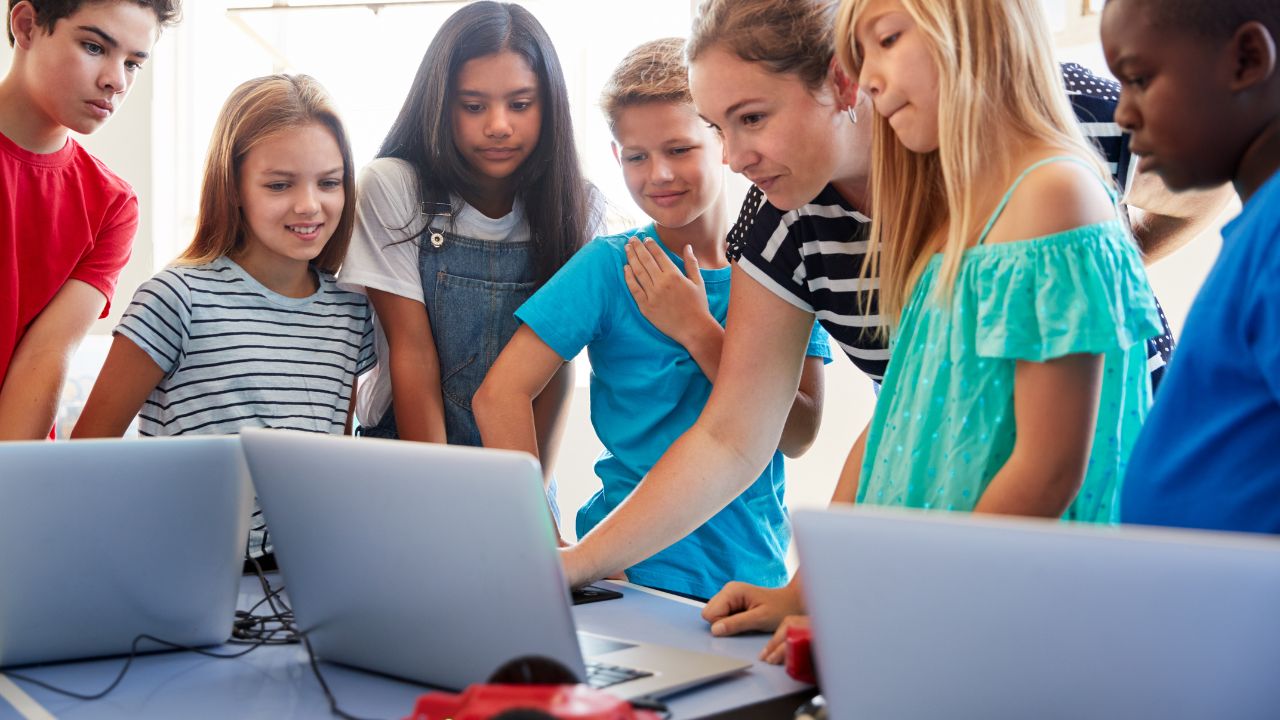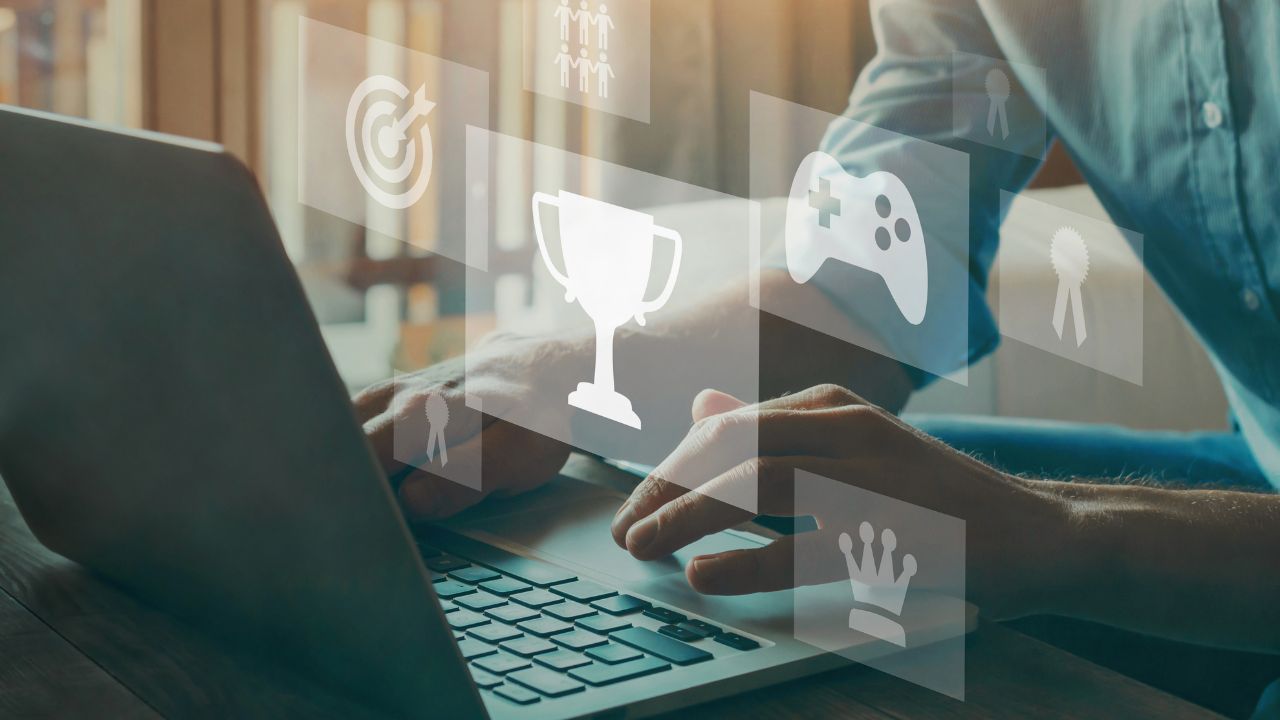- Gamification In Education: Engaging Students Through Game-Based Learning
- Understanding Gamification:
- The Rationale Behind Game-Based Learning:
- The Benefits of Gamification in Education:
- Gamification In Practice:
- The Challenges and Future of Gamification in Education:
- Conclusion:
- Keywords:
- Key Takeaways:
- You Might Still Be Wondering about…
- How can gamification address the diverse learning needs of students in a classroom?
- What are some potential challenges in implementing gamification, and how can they be overcome?
- Can gamification be effective for all age groups and subjects, or are there limitations?
- How can educators ensure that gamified learning experiences align with curriculum objectives?
- What role does feedback play in game-based learning, and how can it be utilized effectively?
- How can gamification in education bridge the digital divide and ensure equal access for all students?
- What are the ethical considerations associated with gamification in education, such as data privacy and student motivation?
- How can game-based learning promote creativity and problem-solving skills among students?
- Are there any cultural or contextual factors that may influence the implementation and effectiveness of gamification in education?
- What research or evidence supports the benefits of gamification in improving learning outcomes?
- Common Misconceptions:
- Gamification is only suitable for younger students or specific subjects.
- Gamification is all about competition and rewards.
- Gamification is a distraction from serious learning.
- Gamification replaces the role of the teacher.
- Gamification only benefits low-performing or disengaged students.
- Gamification is costly and requires extensive technology infrastructure.
- Gamification promotes mindless learning or rote memorization.
- Gamification replaces traditional teaching methods entirely.
- Gamification focuses solely on extrinsic motivation.
- Gamification is a one-size-fits-all approach.
- What Can We Do?
- 1. Define Learning Objectives:
- 2. Choose Appropriate Game Elements:
- 3. Personalize the Experience:
- 4. Design Clear Instructions:
- 5. Foster Collaboration and Competition:
- 6. Provide Immediate Feedback:
- 7. Integrate Reflection and Assessment:
- 8. Provide Support and Resources:
- 9. Train Educators:
- 10. Evaluate and Refine:
- 11. Ensure Accessibility and Inclusion:
- 12. Seek Collaboration and Resources:
- 13. Start Small and Scale Up:
- 14. Stay Updated with Research and Best Practices:
- 15. Celebrate Achievements:
Gamification In Education: Engaging Students Through Game-Based Learning

In the world of modern education, the constant evolution of technology has transformed the way we learn, teach, and perceive the concept of a classroom. Among these advancements, the emergence of Educational Technology, or EdTech, has established a diverse array of innovative approaches to enhance learning experiences. One approach that has particularly captured the attention of educators and students alike is gamification. Gamification in education, the incorporation of game mechanics into the learning process, is gaining substantial traction for its potential to revolutionize student engagement and outcomes.
Understanding Gamification:

Before delving deeper, let’s understand what gamification is. Essentially, gamification refers to the application of game-design elements, principles, and video game-style experiences in non-gaming contexts. This approach encourages engagement, competition, and learning by setting up challenges, levels, leaderboards, and reward systems. When applied to education, gamification combines entertainment and education, offering a platform where students can learn in a fun, interactive, and enjoyable environment. This innovative learning strategy has the potential to transform education, making learning more accessible and stimulating for students.
The Rationale Behind Game-Based Learning:
Learning through games isn’t an entirely new concept. It is a widespread notion that people learn effectively when they’re having fun. Games have been an integral part of human learning since ancient times – chess, for instance, was initially invented as a strategic warfare simulation. In the context of modern education, games can motivate students, encourage a positive attitude towards learning, and facilitate cognitive and social development.
EdTech and gamification build on these principles, using digital platforms to make the learning process more engaging, adaptable, and personalized. Incorporating game-based learning into a curriculum can enhance the students’ interest in a subject, improve retention rates, and ultimately lead to improved academic outcomes.
The Benefits of Gamification in Education:
The advantages of incorporating gamification into the learning process are vast. These benefits span from increased student motivation to improved learning outcomes, as well as the development of skills that are valuable beyond the classroom.
- Enhanced Engagement: Games inherently motivate players to strive for success, remain persistent in the face of challenges, and aim for higher scores. In a similar vein, game-based learning incites students to engage with the subject matter, enhancing their focus and participation.
- Personalized Learning: EdTech platforms offer adaptive learning experiences, allowing games to be tailored according to individual learning styles, paces, and preferences. This personalization helps students to learn at their own pace and promotes inclusivity in the classroom.
- Skill Development: Gamified learning isn’t just about content absorption; it also aids in the development of critical 21st-century skills. These include problem-solving, creativity, collaboration, digital literacy, and critical thinking.
- Improved Retention: Learning in a fun, engaging context helps students remember the material better. Gamified experiences encourage active learning, which significantly improves information retention and recall.
- Feedback and Assessment: Gamification also provides immediate feedback, which is crucial in the learning process. Leaderboards, points, badges, and progress bars give students insight into their performance, helping them identify areas for improvement.
Gamification In Practice:

Let’s take a look at some examples of how gamification has been employed in educational settings:
- ClassDojo: This classroom management tool uses gamification to encourage positive behavior. Students earn ‘dojo points’ for displaying desired behaviors, such as teamwork, perseverance, and participation. This reward system motivates students and fosters a positive classroom environment.
- Minecraft: Education Edition: Minecraft, a popular video game, has been repurposed for educational use. In this immersive game-based learning environment, students can engage in activities that promote creativity, problem-solving, and collaboration.
- Duolingo: Duolingo gamifies language learning with bite-sized lessons, immediate feedback, rewards, and a competitive leaderboard. This structure makes the daunting task of learning a new language more enjoyable and manageable.
The Challenges and Future of Gamification in Education:

Despite the exciting prospects of gamification in education, there are challenges to overcome. These include digital divide issues, the risk of over-emphasis on competition, and the potential for distraction from educational objectives.
Moving forward, educators and developers must continue to work together to optimize the use of gamification in the learning process. The future of education lies in striking a balance, integrating technology and traditional methods to create an inclusive, engaging, and effective educational environment.
Moreover, the continuous advancements in artificial intelligence, machine learning, and augmented/virtual reality are set to further enhance the potential of gamified learning experiences. As the field continues to grow, the day may not be far when we see game-based learning taking center stage in classrooms worldwide.
Conclusion:
The implementation of gamification in education, empowered by EdTech, represents a significant shift from traditional teaching methods. By merging fun with learning, it creates an environment that promotes engagement, personalized learning, and skill development. Although challenges persist, the potential benefits of gamification in education are enormous. As we move forward in the digital age, gamification could well become a cornerstone of future educational practices, ushering in a new era of engaging, effective, and inclusive learning.
Keywords:

- Gamification: The application of game-design elements, principles, and mechanics in non-gaming contexts, such as education, to enhance engagement and learning outcomes.
- EdTech: Abbreviation for Educational Technology, which refers to the use of technology, digital tools, and platforms to enhance teaching and learning experiences.
- Game-Based Learning: A pedagogical approach that incorporates games and gaming elements into the learning process to make it more interactive, engaging, and effective.
- Engagement: The level of interest, attention, and active participation exhibited by students in the learning process, which can be heightened through gamification.
- Personalized Learning: Tailoring the learning experience to meet the individual needs, preferences, and learning styles of each student, facilitated by adaptive technology and game-based platforms.
- Retention: The ability to remember and recall learned information over time, which can be improved through active and engaging learning experiences, such as game-based learning.
- 21st-Century Skills: A set of skills necessary for success in the modern world, including critical thinking, problem-solving, creativity, collaboration, digital literacy, and adaptability.
- Feedback: Information provided to students regarding their performance, progress, or understanding of a topic, often in the form of immediate responses or assessments within game-based learning.
- Digital Divide: The gap between those who have access to and can effectively use technology and those who do not, which can impact the equitable implementation of gamification in education.
- Inclusive Learning: Creating an educational environment that caters to the diverse needs and abilities of all students, ensuring equal opportunities and participation.
Key Takeaways:

- Gamification in education combines game mechanics with learning to enhance student engagement and motivation.
- Game-based learning promotes personalized and adaptive learning experiences, catering to individual student needs and preferences.
- Gamification improves retention rates, fosters the development of 21st-century skills, and provides immediate feedback to students.
- Examples of gamification in education include platforms like ClassDojo, Minecraft: Education Edition, and Duolingo.
- The future of gamification in education lies in striking a balance between technology and traditional methods and leveraging advancements like AI and AR/VR.
You Might Still Be Wondering about…

How can gamification address the diverse learning needs of students in a classroom?
Gamification in education has the potential to address the diverse learning needs of students by offering personalized learning experiences. Through adaptive technology and game-based platforms, students can engage with content at their own pace and in a format that suits their individual learning styles. Gamification allows for differentiation, enabling students to choose the level of difficulty or path that aligns with their abilities and interests. This flexibility accommodates various learning preferences, whether it be visual, auditory, kinesthetic, or a combination thereof. Furthermore, gamification provides opportunities for scaffolding and remediation, offering additional support for struggling learners while challenging advanced students with more complex tasks. By catering to individual needs, gamification creates a more inclusive learning environment that ensures all students have the opportunity to succeed.
What are some potential challenges in implementing gamification, and how can they be overcome?
Implementing gamification in education may come with certain challenges. One potential challenge is the availability of technology and access to digital platforms, which can create a digital divide among students. To address this, educators can explore low-tech alternatives or seek funding and resources to provide equal access to technology. Additionally, training and support for teachers are essential to effectively implement gamification strategies. Professional development programs can equip educators with the necessary skills and knowledge to integrate game-based learning into their teaching practices. It is also important to ensure that gamified experiences align with curriculum objectives and are integrated seamlessly into the broader educational framework. Collaboration among teachers, administrators, and instructional designers can help overcome these challenges by providing guidance, resources, and ongoing support.
Can gamification be effective for all age groups and subjects, or are there limitations?
While gamification has shown promising results across various age groups and subjects, it is important to consider the developmental appropriateness and context of implementation. Gamification strategies can be tailored to suit the needs of different age groups, ensuring that the game mechanics and content are age-appropriate. For example, younger students may benefit from simpler games with more visual elements, while older students may engage better with complex simulations or problem-solving activities. Likewise, subjects can be gamified in diverse ways, although some disciplines may lend themselves more naturally to gamification. Science, math, and language learning are often seen as ideal subjects for gamified approaches due to their inherent problem-solving and interactive nature. However, with thoughtful design and adaptation, gamification can be applied to a wide range of subjects, including social sciences, arts, and humanities. The key is to align the game mechanics and elements with the learning objectives and outcomes of each subject.
How can educators ensure that gamified learning experiences align with curriculum objectives?
Aligning gamified learning experiences with curriculum objectives requires careful planning and instructional design. Educators should begin by clearly defining the desired learning outcomes and competencies that need to be achieved. From there, they can select or design game-based activities and mechanics that support and reinforce these objectives. Collaboration with instructional designers or educational technology specialists can help in creating effective gamified experiences that integrate seamlessly with the curriculum. It is crucial to map the game elements, such as challenges, levels, and rewards, to specific learning goals and ensure that they provide meaningful learning opportunities. Regular evaluation and assessment should be conducted to gauge the effectiveness of gamification in meeting the intended curriculum objectives. By aligning gamification with the curriculum, educators can ensure that the game-based learning experiences contribute to the overall educational goals and outcomes.
What role does feedback play in game-based learning, and how can it be utilized effectively?
Feedback is a critical component of game-based learning as it provides students with information about their performance, progress, and areas for improvement. Effective feedback in gamified learning experiences should be timely, specific, and meaningful. Immediate feedback allows students to reflect on their actions and make adjustments in real-time. It can take various forms, such as visual cues, audio prompts, or in-game notifications, highlighting correct or incorrect responses, progress achieved, or achievements unlocked. Feedback should also be tailored to individual student needs, providing targeted guidance and suggestions for improvement. For example, adaptive technology can generate personalized feedback based on the student’s performance, identifying areas of weakness and offering additional practice or resources. Moreover, feedback should be constructive, focusing on the process of learning rather than solely on the end result. By providing ongoing and supportive feedback, game-based learning experiences can enhance student understanding, engagement, and motivation.
How can gamification in education bridge the digital divide and ensure equal access for all students?
Bridging the digital divide and ensuring equal access to gamification in education requires a multifaceted approach. Firstly, educational institutions can work towards providing access to technology and internet connectivity to all students, either by equipping classrooms with necessary resources or by facilitating take-home programs. Collaboration with community organizations, government initiatives, or private sector partnerships can help secure funding for such endeavors. Additionally, educators can consider low-tech alternatives or hybrid models that blend digital and non-digital elements, ensuring that gamified experiences are accessible to students with limited technology resources. It is crucial to be mindful of students’ diverse socioeconomic backgrounds and create inclusive environments that do not disadvantage any individual or group. Furthermore, professional development programs for educators can help enhance digital literacy skills and provide strategies for implementing gamification in resource-constrained settings. By actively addressing the digital divide, educators can promote equitable access to gamified learning experiences and bridge the gap in educational opportunities.
What are the ethical considerations associated with gamification in education, such as data privacy and student motivation?
Gamification in education raises ethical considerations that must be addressed to ensure student well-being and safeguard their privacy. One key concern is data privacy, as gamified learning experiences often involve collecting and analyzing student data. Educators and administrators should adhere to strict data protection guidelines and ensure compliance with applicable laws and regulations. Clear policies and consent mechanisms should be in place to inform students and their parents about the type of data collected, how it will be used, and who will have access to it. Transparency is crucial to building trust with students and maintaining their privacy.
Another ethical consideration is student motivation. While gamification can increase engagement, it is essential to strike a balance between extrinsic rewards and intrinsic motivation. Over-reliance on rewards and competition may lead to a shallow focus on achieving points or badges rather than genuine learning. Educators should design game-based experiences that foster a sense of autonomy, mastery, and purpose in students, emphasizing the intrinsic value of learning. Encouraging collaboration, reflection, and real-world application of knowledge can further enhance student motivation and ethical engagement with gamified learning experiences.
How can game-based learning promote creativity and problem-solving skills among students?
Game-based learning offers a unique opportunity to foster creativity and problem-solving skills among students. Games often present players with complex challenges that require creative thinking and problem-solving abilities to overcome. By incorporating game mechanics such as puzzles, quests, or open-ended scenarios, game-based learning experiences encourage students to think critically, analyze information, and develop innovative solutions. Furthermore, game-based environments allow for experimentation and risk-taking, providing a safe space to explore different approaches and learn from failures. Students can collaborate, communicate, and negotiate within game scenarios, honing their teamwork and communication skills while working towards shared goals. Through game-based learning, students develop the ability to think outside the box, adapt to changing circumstances, and apply their knowledge and skills in dynamic and interactive contexts.
Are there any cultural or contextual factors that may influence the implementation and effectiveness of gamification in education?
Yes, cultural and contextual factors can influence the implementation and effectiveness of gamification in education. It is important to consider the diverse cultural backgrounds of students and how they may interact with gamified learning experiences. Some cultural preferences or norms may influence the types of games or game mechanics that resonate with students. Educators should ensure that gamified experiences are inclusive, respectful, and representative of different cultures, avoiding stereotypes or biases. Additionally, contextual factors, such as resource availability, infrastructure, and technological readiness, may impact the implementation of gamification. Educators should adapt gamified learning experiences to fit the specific context, considering constraints and leveraging available resources effectively. Collaborating with local communities, parents, and students can provide insights and perspectives that enrich the implementation of gamification within cultural and contextual frameworks.
What research or evidence supports the benefits of gamification in improving learning outcomes?
A growing body of research supports the benefits of gamification in improving learning outcomes. Studies have shown that gamified learning experiences enhance student engagement, motivation, and knowledge retention. For example, a meta-analysis by Hamari et al. (2016) found that gamification positively impacts learning and performance outcomes across various domains. Another study by Hwang and Wu (2012) demonstrated that students who participated in gamified learning activities showed higher achievement and better problem-solving skills compared to traditional instruction. Moreover, research suggests that gamification can foster the development of critical 21st-century skills, such as collaboration, communication, and creativity (Plass et al., 2013). By providing immediate feedback, adaptive challenges, and personalized learning experiences, gamification supports meaningful learning and deep understanding. It is important to note that while evidence supports the benefits of gamification, further research is needed to explore its long-term impacts, effectiveness across different contexts, and best practices for implementation.
Common Misconceptions:

Gamification is only suitable for younger students or specific subjects.
Reality: Gamification can be effective for students of all age groups and across a wide range of subjects. While it may have gained popularity in primary and secondary education, gamification can also be applied to higher education and professional development. The key is to align the game mechanics and elements with the learning objectives and outcomes of each age group and subject. For example, in higher education, gamification can be used to simulate real-world scenarios, promote critical thinking, and facilitate problem-solving skills in disciplines such as business, medicine, or engineering.
Gamification is all about competition and rewards.
Reality: While competition and rewards can be components of gamification, they are not the sole focus. Gamification is more than just earning points, badges, or rankings. The true essence lies in the engagement, motivation, and active participation it fosters. Game-based learning environments provide interactive challenges, immediate feedback, and opportunities for exploration, collaboration, and creativity. The goal is to create meaningful learning experiences that leverage the inherent enjoyment of games while focusing on the learning process and outcomes.
Gamification is a distraction from serious learning.
Reality: On the contrary, gamification enhances the learning process by making it more engaging, interactive, and effective. Games have the power to captivate attention, stimulate curiosity, and promote active learning. By integrating educational content within game contexts, gamification allows students to connect with the material in a way that is enjoyable and immersive. This heightened engagement often leads to increased motivation, improved knowledge retention, and better overall learning outcomes.
Gamification replaces the role of the teacher.
Reality: While gamification introduces new elements into the learning environment, the role of the teacher remains vital. Educators are responsible for designing and implementing gamified experiences, setting learning objectives, and guiding students throughout the process. Teachers play a crucial role in providing context, facilitating discussions, offering support, and making connections between the game-based activities and the curriculum. They serve as mentors, providing guidance, feedback, and scaffolding to ensure that students extract the maximum educational value from the gamified learning experience.
Gamification only benefits low-performing or disengaged students.
Reality: Gamification benefits students across the academic spectrum, including high achievers. While it can certainly help re-engage disengaged students, it also provides opportunities for advanced learners to be challenged, explore complex concepts, and develop higher-order thinking skills. The personalized nature of gamification allows for differentiation, enabling students to progress at their own pace and tackle more challenging tasks as they demonstrate mastery. Additionally, the element of competition can motivate high achievers to strive for excellence and surpass their own goals.
Gamification is costly and requires extensive technology infrastructure.
Reality: While technology can enhance gamification, it is not always a prerequisite. Gamification can be implemented with varying degrees of technological resources. While some gamified experiences may leverage digital platforms and tools, others can be designed using low-tech approaches such as game boards, cards, or role-playing activities. The focus should be on the game mechanics, engaging content, and meaningful learning experiences rather than solely relying on sophisticated technology. By adopting a creative and resourceful approach, educators can implement gamification within their means and provide enriching experiences to their students.
Gamification promotes mindless learning or rote memorization.
Reality: Gamification is not about mindless learning or rote memorization. Effective game-based learning experiences are designed to promote deep understanding, critical thinking, and problem-solving skills. Games can provide meaningful contexts for learning, allowing students to apply their knowledge in practical situations, make informed decisions, and explore multiple solutions. By integrating challenges, puzzles, or simulations, gamification encourages active participation, analysis, and reflection, fostering a deeper understanding of the subject matter.
Gamification replaces traditional teaching methods entirely.
Reality: Gamification should be seen as a complementary approach to traditional teaching methods rather than a replacement. It is not intended to replace the valuable aspects of direct instruction, classroom discourse, or hands-on activities. Instead, gamification should be integrated strategically, in alignment with specific learning objectives and desired outcomes. Educators can blend gamified activities with other instructional methods, creating a balanced approach that combines the benefits of both traditional and gamified learning experiences.
Gamification focuses solely on extrinsic motivation.
Reality: While extrinsic motivation, such as rewards and competition, can be employed in gamification, it is important to foster intrinsic motivation as well. Intrinsic motivation stems from the inherent enjoyment, curiosity, and satisfaction of learning. Gamification can leverage intrinsic motivation by providing meaningful challenges, opportunities for autonomy, mastery, and purposeful learning experiences. By emphasizing the intrinsic value of learning, educators can foster students’ long-term motivation, curiosity, and a genuine passion for the subject matter.
Gamification is a one-size-fits-all approach.
Reality: Gamification should be adapted and tailored to the specific learning objectives, student population, and context. The implementation of gamification should consider factors such as age, cultural diversity, individual learning needs, and subject matter. Customization and personalization are key to creating effective gamified experiences that resonate with students and enhance their learning outcomes. Flexibility and adaptability in designing game mechanics, content, and assessments ensure that gamification meets the unique needs of each educational setting and student population.
What Can We Do?

1. Define Learning Objectives:
- Clearly define the learning objectives and desired outcomes for gamified activities.
- Align the game mechanics, challenges, and content with these objectives.
2. Choose Appropriate Game Elements:
- Select game elements that support the learning goals and engage students.
- Consider elements like challenges, levels, points, badges, leaderboards, and rewards.
3. Personalize the Experience:
- Tailor the gamified activities to meet the individual needs and preferences of students.
- Use adaptive technology or provide options for students to choose their path or difficulty level.
4. Design Clear Instructions:
- Provide clear instructions on how to participate in the gamified activities.
- Ensure students understand the rules, objectives, and any specific guidelines or expectations.
5. Foster Collaboration and Competition:
- Incorporate opportunities for collaboration and teamwork within the gamified experiences.
- Encourage healthy competition that motivates students to excel while maintaining a supportive environment.
6. Provide Immediate Feedback:
- Design feedback mechanisms that provide timely and constructive feedback to students.
- Use visual cues, progress bars, or in-game notifications to provide feedback on performance and progress.
7. Integrate Reflection and Assessment:
- Include opportunities for students to reflect on their learning experiences within the gamified activities.
- Assess student progress and understanding through formative and summative assessments integrated into the game-based learning.
8. Provide Support and Resources:
- Offer resources and support materials that students can access during the gamified activities.
- Provide additional guidance or assistance for struggling students through hints, tutorials, or extra practice.
9. Train Educators:
- Provide professional development opportunities for teachers to learn about gamification strategies and effective implementation.
- Equip educators with the necessary skills and knowledge to create and manage gamified learning experiences.
10. Evaluate and Refine:
- Continuously evaluate the effectiveness of gamified experiences in achieving learning objectives.
- Collect feedback from students, teachers, and stakeholders to identify areas of improvement and make necessary refinements.
11. Ensure Accessibility and Inclusion:
- Consider the diverse needs of students and create gamified experiences that are accessible to all learners.
- Ensure the design and content of games are inclusive, culturally sensitive, and representative of diverse perspectives.
12. Seek Collaboration and Resources:
- Collaborate with instructional designers, educational technology specialists, and colleagues to share ideas and resources.
- Explore partnerships with external organizations or experts who can provide guidance and support for gamification initiatives.
13. Start Small and Scale Up:
- Begin with small-scale gamified activities and gradually expand to larger projects or curricular integration.
- Learn from initial experiences and gather feedback to refine and improve future implementations.
14. Stay Updated with Research and Best Practices:
- Stay informed about the latest research, trends, and best practices in gamification in education.
- Attend conferences, participate in professional networks, and engage with online communities to stay abreast of new developments.
15. Celebrate Achievements:
- Recognize and celebrate student achievements and milestones within the gamified experiences.
- Provide opportunities for students to showcase their progress or share success stories with peers and the wider community.
By following these actionable steps, educators can effectively implement gamification in education, creating engaging and effective learning experiences for their students.










0 Comments